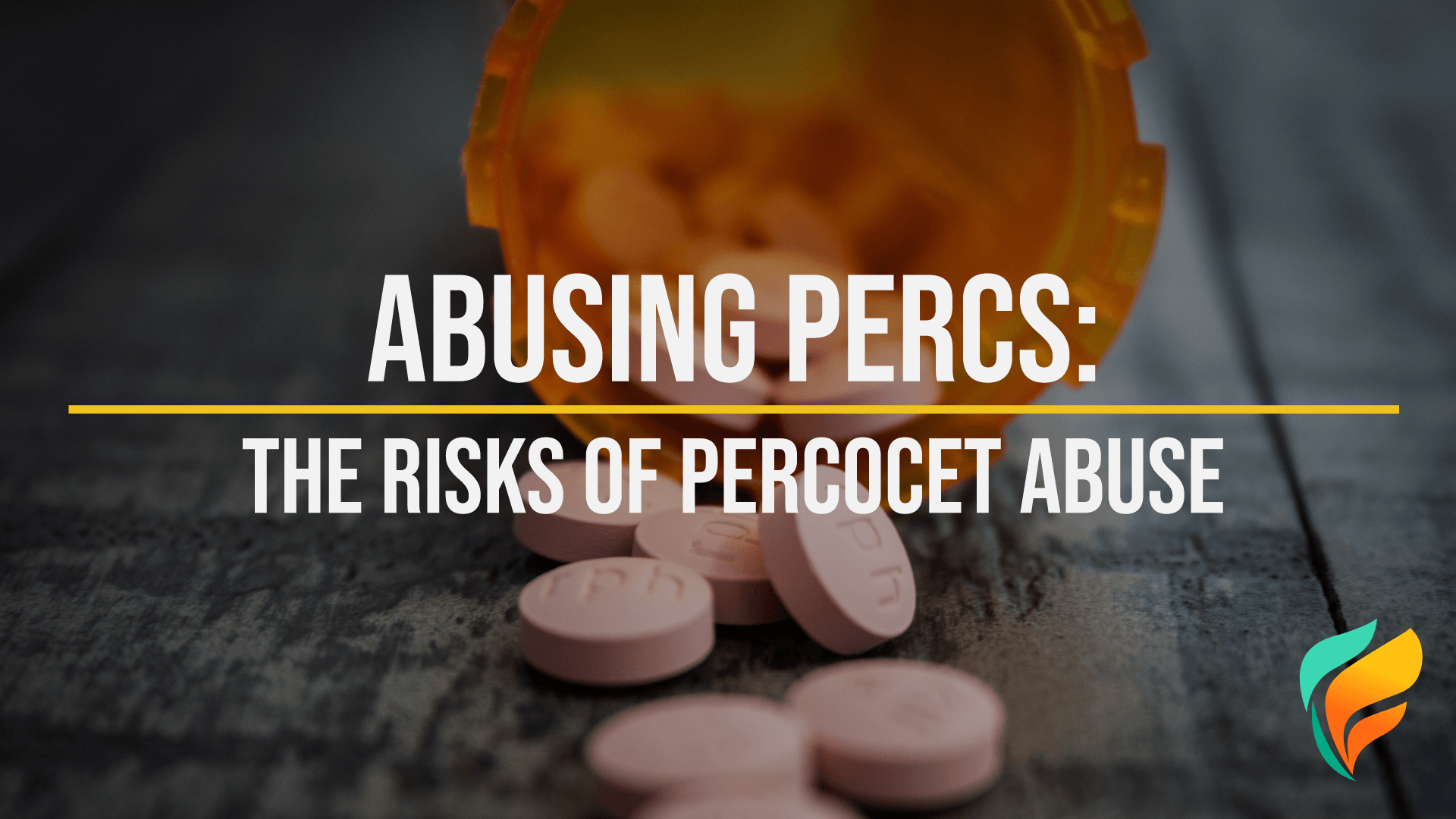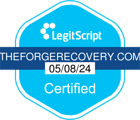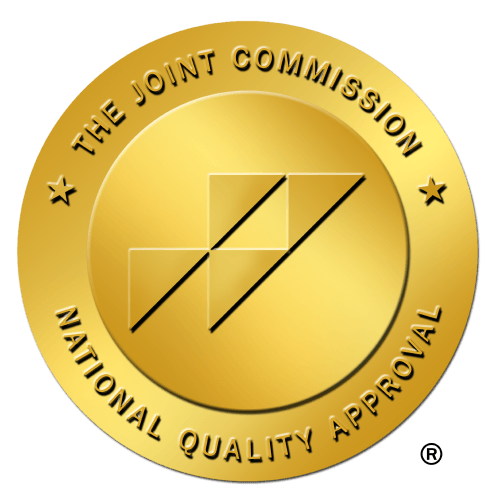Perks Drugs: An Introduction to Percocet Medication & Abuse


What are perks drugs? Percocet abuse can be a gateway to more powerful and deadly opioids. Learn the facts about perks drugs in our blog.
“Perks drugs” is a street name for Percocet. They are prescription pain medications that include oxycodone and acetaminophen as active components. Oxycodone is a powerful opioid pain reliever. Acetaminophen is a non-opioid pain reliever often available in over-the-counter medications.
Combining these two components provides a better pain management treatment for patients experiencing moderate to severe pain.
However, that doesn’t mean perks drugs aren’t addictive. Many people have become dependent on opioid pain relievers like perks drugs without even engaging in drug abuse.
How Do Perks Drugs Work?
By binding to certain areas called opioid receptors in the brain and spinal cord, oxycodone, the opioid component in perks medications, lowers pain perception. It is a strong painkiller that can greatly relieve those who have had operations, been wounded, or suffered from chronic pain. Opioids such as oxycodone have a high potential for addiction and misuse.
Because of their opioid component, perks drugs are classified as Schedule II prohibited drugs by the Drug Enforcement Administration in the United States. This rating indicates a significant risk of abuse, which can develop a physical and psychological dependency.
Perks drugs should only be taken when a doctor advises, just like any other medication. Following the prescribed dosage and use guidelines is essential to prevent the dangers associated with opioid use.
What’s in Perks Drugs?
The active components of Perks Drugs include oxycodone and acetaminophen. The following is a breakdown of their makeup:
Oxycodone
Oxycodone is a very effective opioid painkiller that binds to opioid receptors in the brain and spinal cord. When a person uses oxycodone, pain signals are reduced, resulting in effective relief from pain. Oxycodone is frequently used to treat moderate to severe pain.
However, it has a significant potential for misuse and addiction; thus, it must be used responsibly and closely monitored.
Acetaminophen
A non-opioid pain reliever that is widely contained in OTC drugs. This enhances the effects of oxycodone safely and also makes perks drugs a little safer to use as they’re not as intense as other opioids. It has antipyretic qualities, which help to reduce fever.
This medication offers a holistic approach to pain management by treating pain intensity and fever symptoms. However, large doses of acetaminophen can be toxic and cause organ damage.
Are You Struggling with Mental Health or Addiction?
We Can Help. Call Us Now!
CALL: 877-839-1772
Perks Drugs: Important Considerations
Perks drugs integrate the opioid painkiller oxycodone with the non-opioid pain reliever acetaminophen.
The oxycodone-to-acetaminophen ratio changes based on the prescription dose, for example, Percocet 5/325 or Percocet 10/325. The dosage is decided by the degree of the pain and the individual's needs.
When compared to acetaminophen, oxycodone poses a larger risk of side effects. Oxycodone side effects may include respiratory depression, constipation, sleepiness, nausea, and overdose. Doctors consider a patient's medical history and probable medication interactions before prescribing the lowest effective dose for the shortest time possible.
Responsible use and following specified dose and usage guidelines are required to reduce risks. Balancing the benefits of pain relief with the potential risks associated with opioid use is vital.
Perks Drugs: Is Oxycodone the Same as Percocet?
No, oxycodone and Percocet are not the same, although they are related. Oxycodone is a highly effective opioid pain reliever. It is a stand-alone active component in various forms, including immediate and extended-release variants. Oxycodone reduces pain perception by connecting to opioid receptors in the brain and spinal cord.
Percocet is a combination drug with two active ingredients such as oxycodone and acetaminophen. Acetaminophen is a non-opioid fever reducer and pain medication. Combining oxycodone & acetaminophen in Percocet provides more effective pain relief than oxycodone alone.
Percocet is often given for acute pain treatment after surgery or injury. However, oxycodone alone can be prescribed for acute and chronic pain management.
Are You Struggling with Mental Health or Addiction?
We Can Help. Call Us Now!
CALL: 877-839-1772
Uses Of Perks Drugs
The following are some of the most common uses of perks drugs:
Percocet is typically indicated for the treatment of moderate to severe pain. It is frequently used to treat acute pain after surgeries, traumas, or dental treatments, and chronic pain disorders like cancer-related pain or severe arthritis.
Percocet is routinely recommended to offer pain management following surgical operations. It relieves pain, allowing patients to recover more quickly.
Percocet can be used to treat pain caused by injuries such as fractures, sprains, or strains. It alleviates pain and allows people to recuperate and restore functioning.
Percocet may be treated for long-term pain with chronic conditions such as fibromyalgia, rheumatoid arthritis, or neuropathic pain. However, alternative treatments are frequently attempted first. Therefore, Percocet is typically used as a temporary cure or when other pain drugs are inadequate.
Percocet is sometimes recommended for pain relief after dental treatments such as tooth extractions, root canals, or oral surgery.
The Risks and Side Effects of Perks Drugs
The risks and side effects of perks drugs are essential to consider before using this prescription pain killer. While perks drugs can effectively relieve pain, they also bring risks and possible side effects that must be addressed. Here are a few key points regarding Perks Drugs' side effects and risks.
Potential for Addiction and Dependency
As an opioid, oxycodone has an immense possibility of addiction and misuse. Perks Drugs can cause physical and psychological dependency if used or abused over an extended period.
Respiratory Depression
Oxycodone and other opioids can cause respiratory depression, resulting in slow or shallow breathing. This is especially harmful when taken in large doses, abused, or combined with other depressants.
Gastrointestinal Effects
Because of the opioid component, constipation is a typical adverse effect of perks drugs. Nausea and vomiting are possible side effects, especially when starting or modifying the dose.
Central Nervous System Effects
Perks drugs may cause drowsiness, dizziness, and confusion as side effects. These side effects could affect mental and physical functioning, making tasks like driving or operating machinery risky.
Allergic Reactions
Some people may have adverse responses to Perks Drugs, which include rashes, itching, swelling, or difficulty breathing. If any indications of an allergic response appear, seek emergency medical treatment.
Liver Toxicity
High dosages or chronic usage of Perks Drugs may cause liver damage, especially owing to the acetaminophen component. Individuals with pre-existing liver issues or who use alcohol should use Perks Drugs cautiously.
Are You Struggling with Mental Health or Addiction?
We Can Help. Call Us Now!
CALL: 877-839-1772
Recognizing the Symptoms of Perks Drugs Addiction
Recognizing Perks Drug addiction signs is essential for understanding and dealing with drug abuse issues. In addition, knowing the signs and symptoms of Perks Drugs addiction may assist individuals, loved ones, and healthcare professionals in intervening and providing the appropriate assistance. Following are some warning indicators to look out for.
Increasing Tolerance
Individuals may need to take more perks drugs to get the same amount of pain relief. Tolerance development might be an early indicator of possible addiction.
Physical Symptoms of Perks Drugs Addoctopm
Pupils that are constricted or pinpoint
Sedation, drowsiness, or extreme sleepiness
Speech slurring and poor coordination
Itchy skin or a flushed appearance
Dozing off or falling asleep at inconvenient moments
Psychological and behavioral changes
Mood swings, irritation, or restlessness
Anxiety, nervousness, or panic attacks
Isolation or social withdrawal
Neglecting obligations at work, school, or home
Engaging in deceptive or secret behavior to get and use perks drugs
Cravings and obsessive thoughts
Perks drug cravings or intense urges
Obsession with getting and using perks drugs
Using perks drugs takes priority over other elements of life, such as relationships or interests.
Seeking multiple prescriptions: "Doctor shopping" refers to visiting numerous healthcare professionals to get various prescriptions.
Frequent trips to the emergency room or seeking medicine from several pharmacies
Withdrawal Symptoms of Perks Drugs
When trying to reduce or discontinue perks drugs, you may experience physical and psychological suffering. Muscle pains, nausea, vomiting, anxiety, sleeplessness, and acute drug cravings are all possible withdrawal symptoms.
Are You Struggling with Mental Health or Addiction?
We Can Help. Call Us Now!
CALL: 877-839-1772
How Long Do Perks Drugs Stay In Your System?
Percocet's stay in your system might vary based on several factors, including individual metabolism, dose, frequency of consumption, and others. The following is an approximate timeline for how long Percocet may be detected in various body fluids.
Blood Test
Percocet usually is detectable in the bloodstream for around 24 hours after the last dose.
Urine Test
Percocet can be found in urine for 2 to 4 days after the last dose. However, it may be observable for up to a week in certain situations, particularly with greater Percocet dosages or chronic use.
Saliva Test
Percocet is often detectable in saliva for 1 to 4 days after usage.
Hair Test
Hair follicle tests provide a wider detection window compared to other procedures. Depending on the length of the hair sample, Percocet can be found in hair follicles for up to 90 days after the last usage.
Vicodin Vs. Percocet: How Does Vicodin Compare to Perks Drugs?
Vicodin and Percocet are both prescribed pain relievers. However, the composition and active components differ. Here's the comparison of Vicodin & Percocet.
Composition
Vicodin: It is a pain reliever with two active ingredients: hydrocodone and acetaminophen.
Percocet: It is a combination medicine that contains both oxycodone and acetaminophen.
Active Ingredients
Vicodin: Vicodin contains hydrocodone, which is a semi-synthetic opioid pain medication with analgesic properties.
Percocet: Percocet contains oxycodone, a potent opioid pain reliever that works by directly targeting opioid receptors in the brain & spinal cord.
Both drugs contain acetaminophen, a non-opioid pain reliever, and fever reducer that works together with opioids for greater pain relief.
Potency
Percocet is typically considered to be more powerful than Vicodin. Because of its increased potential for misuse and addiction, oxycodone is categorized as a Schedule II prohibited substance. And hydrocodone is classified as a Schedule III controlled substance.
Dosage Levels
Vicodin is available in a variety of strengths, including formulations with varying hydrocodone-to-acetaminophen ratios. Percocet is also available in various strengths, with variable oxycodone-to-acetaminophen ratios.
Prescription Procedures
Vicodin and Percocet prescribing practices may differ depending on area restrictions and doctor preferences.
Side Effects and Risks
Vicodin and Percocet both have the same risks and possible side effects, including sleepiness, constipation, respiratory depression, dependency, and addiction. Acetaminophen, which is included in both drugs, can induce liver damage if used in excess.
Are Perks Drugs Addictive?
Perks drugs have a high potential for addiction and dependency. Therefore, it is necessary to understand their nature and associated risks. In this section, we look at the possibility of addiction using Perks Drugs.
Opioid Nature
Percocet includes oxycodone, a very effective opioid analgesic. Opioids bind to pain receptors in the brain, effectively suppressing pain signals and creating sensations of pleasure and relaxation. This process, however, increases the probability of addiction.
Physical Dependence
Long-term use of perks drugs might result in physical dependency. The body adjusts to the drug's presence and requires it to operate normally. Sudden discontinuation or dose reduction might cause withdrawal symptoms such as nausea, sweating, sleeplessness, and muscle pains.
Tolerance Development
Tolerance can develop due to continued use of perks drugs, requiring greater dosages for the intended effects. Tolerance can raise the risk of addiction because it leads to persons seeking greater dosages or more frequent use, trapping them in a loop of increasing drug intake.
Psychological Dependence
Psychological dependency can also be caused by perks drugs. For example, the euphoric benefits of the medicine might result in cravings and a psychological desire to use the drug even when it is no longer required for pain treatment.
Abuse & Misuse
Misusing perks drugs, such as crushing tablets for snorting or injecting, significantly increases the risk of addiction. These techniques swiftly transfer the drug to the brain, amplifying its effects and raising the probability of addiction.
Withdrawal Symptoms
Individuals who try to stop or reduce their use of Perks Drugs may encounter withdrawal symptoms such as anxiety, restlessness, muscular pains, sleeplessness, and acute drug cravings. These symptoms might make quitting more complex and raise the likelihood of recurrence.
Individual Vulnerability
Certain factors can increase an individual's tendency to develop a Perks Drug addiction. These are examples of a personal or familial history of substance addiction, untreated mental health issues, and a history of past substance use disorders.
Treatment and Recovery
Drug addiction is a growing healthcare concern worldwide, affecting individuals of all ages. Unfortunately, denial and unawareness often prevent people from seeking help, leading to further deterioration of their health. Drug dependency can result in various physical and mental health complications, including heart issues, liver damage, HIV, cardiovascular problems, lung complications, arthritis, depression, anxiety, and even suicide.
Recognizing the signs of addiction is crucial, and seeking medical attention is recommended.
Addicted to Perks Drugs? Reach Out Today to The Forge Recovery Center
Perks drugs aren’t as strong (or as dangerous) as other opioid drugs. However, they can be deadly in their own right, and addiction to perks drugs can rapidly turn into heroin or fentanyl addiction. Getting help is key.
The Forge Recovery Center uses proven, evidence-based treatment to successfully treat opioid addiction. We’ve helped many people develop the coping mechanisms and tools they need to live lives free from opioid abuse.
Don’t risk a drug overdose. If you want to learn more about perks drugs and how opioid abuse can be successfully treated, contact The Forge Recovery Center today.
Are You Struggling with Mental Health or Addiction?
We Can Help. Call Us Now!
CALL: 877-839-1772





